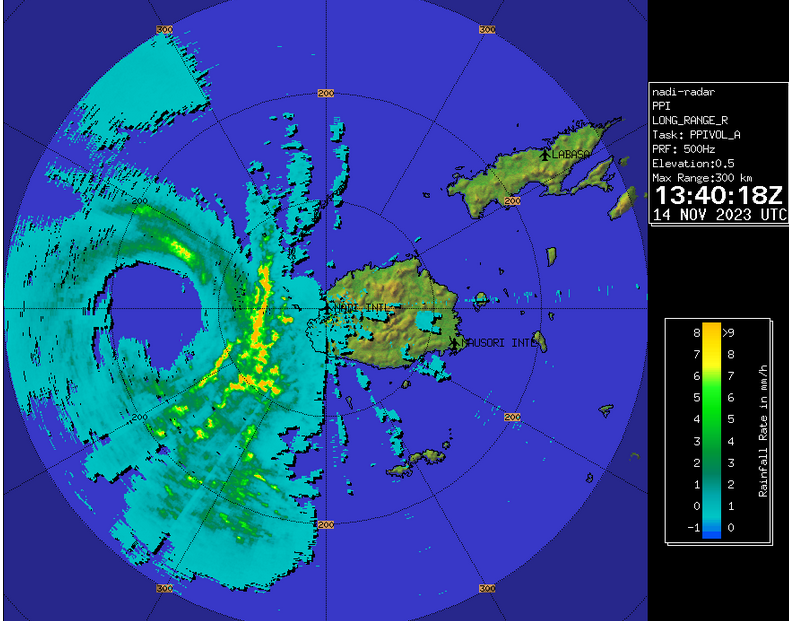Former Tropical Storm Ramon weakened over the Eastern North Pacific Ocean southwest of Baja California on Sunday. At 10:00 a.m. EST on Sunday the center of former Tropical Storm Ramon was located at latitude 14.4°N and longitude 123.9°W which put it about 1085 miles (1750 km) west-southwest of the southern tip of Baja California. Ramon was moving toward the west at 7 m.p.h. (11 km/h). The maximum sustained wind speed was 35 m.p.h. (55 km/h) and there were wind gusts to 45 m.p.h. (75 km/h). The minimum surface pressure was 1006 mb.
A large upper level trough over the Eastern North Pacific Ocean produced strong southwesterly winds that blew the top off of former Tropical Storm Ramon. The remaining circulation of former Tropical Storm Ramon in the lower levels consisted primarily of bands of showers and lower clouds. Strong upper level winds blew the tops off of any clouds that rose higher in the atmosphere.
Former Tropical Storm Ramon will move through an environment that will be unfavorable for intensification during the next 36 hours. Ramon will move over water where the Sea Surface Temperatures are near 27°C. However, the large upper level trough over the Eastern North Pacific will continue to produce strong southwesterly winds. Those winds will cause strong vertical wind shear. The strong wind shear will cause formed Tropical Storm Ramon to weaken during the next 36 hours.
Since the circulation of former Tropical Storm Ramon only exists in the lower levels of the atmosphere, it will be steered by the winds near the surface of the Earth. Former Tropical Storm Ramon will move south of a surface high pressure system over the Eastern North Pacific. The high pressure system will steer former Tropical Storm Ramon toward the west during the next 36 hours.

